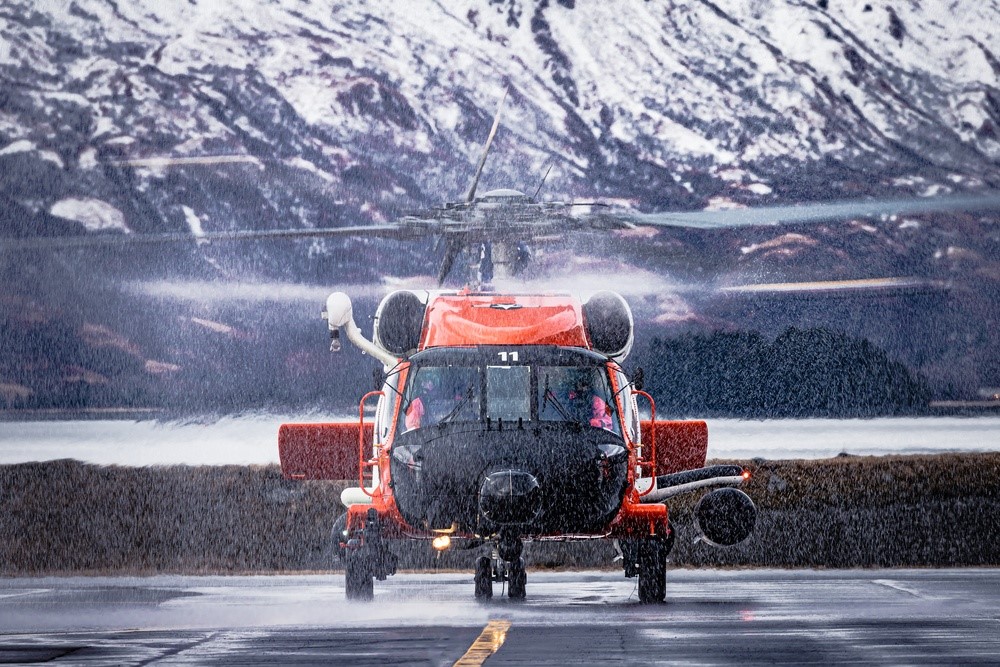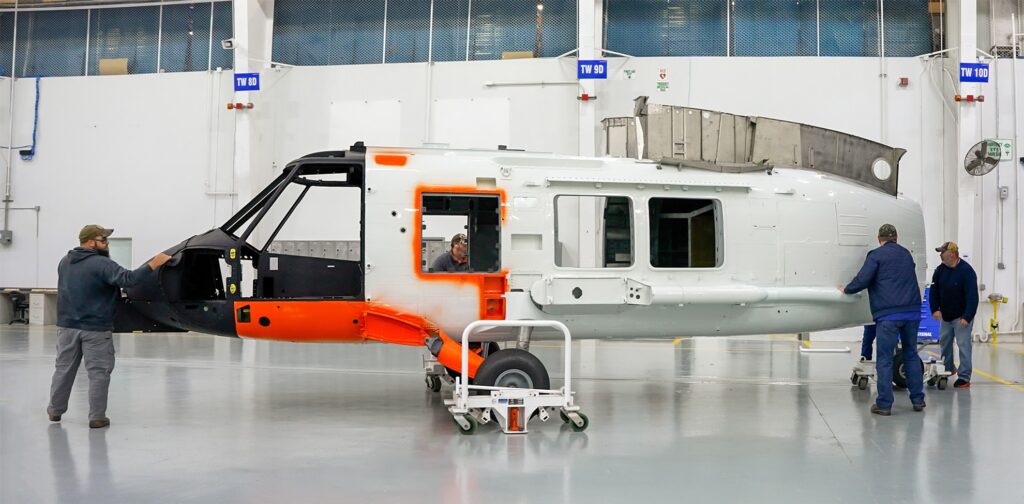
Through a combination of newly acquired airframes and plans to sunset and transition its 98 MH-65 Dolphin helicopters, the U.S. Coast Guard (USCG) is set to expand its MH-60T Jayhawk inventory greatly. The major effort will now kick off in earnest with Sikorsky’s delivery of the first of 45 ordered MH-60T airframes.
The Coast Guard currently flies 48 Sikorsky MH-60T aircraft as the service’s primary medium-range, multi-weather, search and rescue platform. Eventually, the USCG will operate an all-Sikorsky rotary wing fleet of 127 helicopters. To get there, the service will continue its MH-60T Service Life Extension Plan (SLEP), which began in 2017, to prolong the aircraft’s 20,000-hour operating limit. The effort involves stripping down the entire aircraft to its structural components, installing a new or repurposed airframe, and replacing worn engines and other dynamic parts from the ground up.
H-60 hulls for the project are being acquired either as newly manufactured frames or repurposed former U.S. Navy SH-60 helicopters. In addition to the new airframe order, the Coast Guard received approval to acquire 20 retired Navy SH-60 hulls. Through the installation of these hulls, the service will add a minimum of 10,000 additional hours to the converted MH-60Ts, pushing the aircraft’s operating life into the 2040s. The overhaul is sorely needed. Currently, the average on over 90 percent of the USCG’s MH-60T aircraft is 16,000 flight hours.

The recent news of Sikorsky’s first airframe delivery marks a significant milestone for the Coast Guard’s SLEP project. The service ordered the hulls, initially 25, in January 2021 for $207 million. Sikorsky’s contract for the 45 total now stipulates 12 airframe deliveries per year through 2027 for $374 million.
All MH-60T conversion work occurs at the Aviation Logistics Center (ALC) housed at U.S. Coast Guard Base Elizabeth City, NC, where the motto is “We Keep ‘Em Flying.” As part of the delivery announcement, Sikorsky President Paul Lemmo praised the ALC for its work to keep the Jayhawk flying for decades. Over the past 30 years, Coast Guard Jayhawks and their crews have flown more than 730,430 flight hours, saving nearly 12,000 lives.
A former naval officer and helicopter pilot, Jon covers a range of Forecast International reports and products, drawing on his 10-year background in military aviation, operations, and education. His previous military assignments include multiple overseas deployments supporting operations in the Arabian Gulf, NATO exercises, and humanitarian missions. Jon’s work is also influenced by his time as a former Presidential Management Fellow and international trade specialist at the Department of Commerce.
Before joining Forecast International, Jon also served as an NROTC instructor and Adjunct Assistant Professor at the University of Texas, where he taught undergraduate courses on naval history, navigation, defense organization, and naval operations and warfare. A lifelong reader and learner, his academic and professional interests include aviation, political and military history, national defense and security, and foreign area studies.



